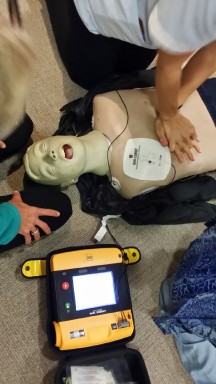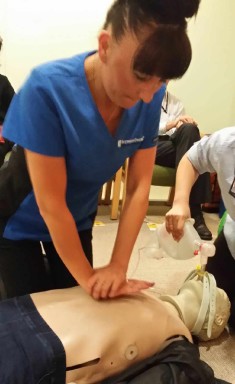Need an Appointment?
If you'd like to book an appointment with the dentist at Seymour Dental then contact us, or call us in Dulwich Hill, Sydney on (02) 9564 2397.
Heart Attack
A heart attack occurs when a blood clot blocks one of the arteries that supply blood to the heart muscle. The medical term for a heart attack is acute myocardial infarction (AMI). The underlying cause of a heart attack is coronary heart disease. Coronary heart disease occurs when fatty deposits slowly build up on the inner wall of the coronary arteries and cause the arteries to become narrow.
Warning signs vary from person to person and they may not always be sudden or severe. Although chest pain or discomfort is the most common symptom of a heart attack, some people will not experience chest pain at all, while others will experience only mild chest pain or discomfort.
When having a heart attack you may experience pain, pressure, heaviness or tightness in one or more parts of your upper body, in combination with other symptoms. People have described this as ‘like an elephant sitting on my chest’, ‘a belt being tightened around my chest’, ‘bad indigestion’ or ‘feeling not quite right’. You may have a choking feeling in your throat. Your arms may feel useless and heavy.
The warning signs of a heart attack include pain, pressure, heaviness or tightness in one or more of your:
- Chest
- Shoulder(s)
- Neck
- Arm(s)
- Jaw; and
- Back
You may also:
- Feel nauseous
- Feel dizzy or light-headed
- Have a cold sweat
- Feel short of breath.
You may have just one of these symptoms or you may have a combination of them. Symptoms can come on suddenly or develop over minutes and get progressively worse. Symptoms usually last for at least 10 minutes.
If you have warning signs of heart attack that are severe, get worse quickly or last more than 10 minutes, call an ambulance or 000 ASAP.
At Seymour Dental we have an emergency kit and oxygen tank with a defibrillator on standby should the worst occur. The defibrillators are very clever now. Once the sensors are placed correctly on the body, it tells you what to do. It will tell to continue CPR or to stand clear and SHOCK the person. We keep going till the ambulance arrives!
Thanks, Roni
Next week: Emergency Medical Training 2016 – Part 3 – Fainting
 479 Marrickville Road
479 Marrickville Road
